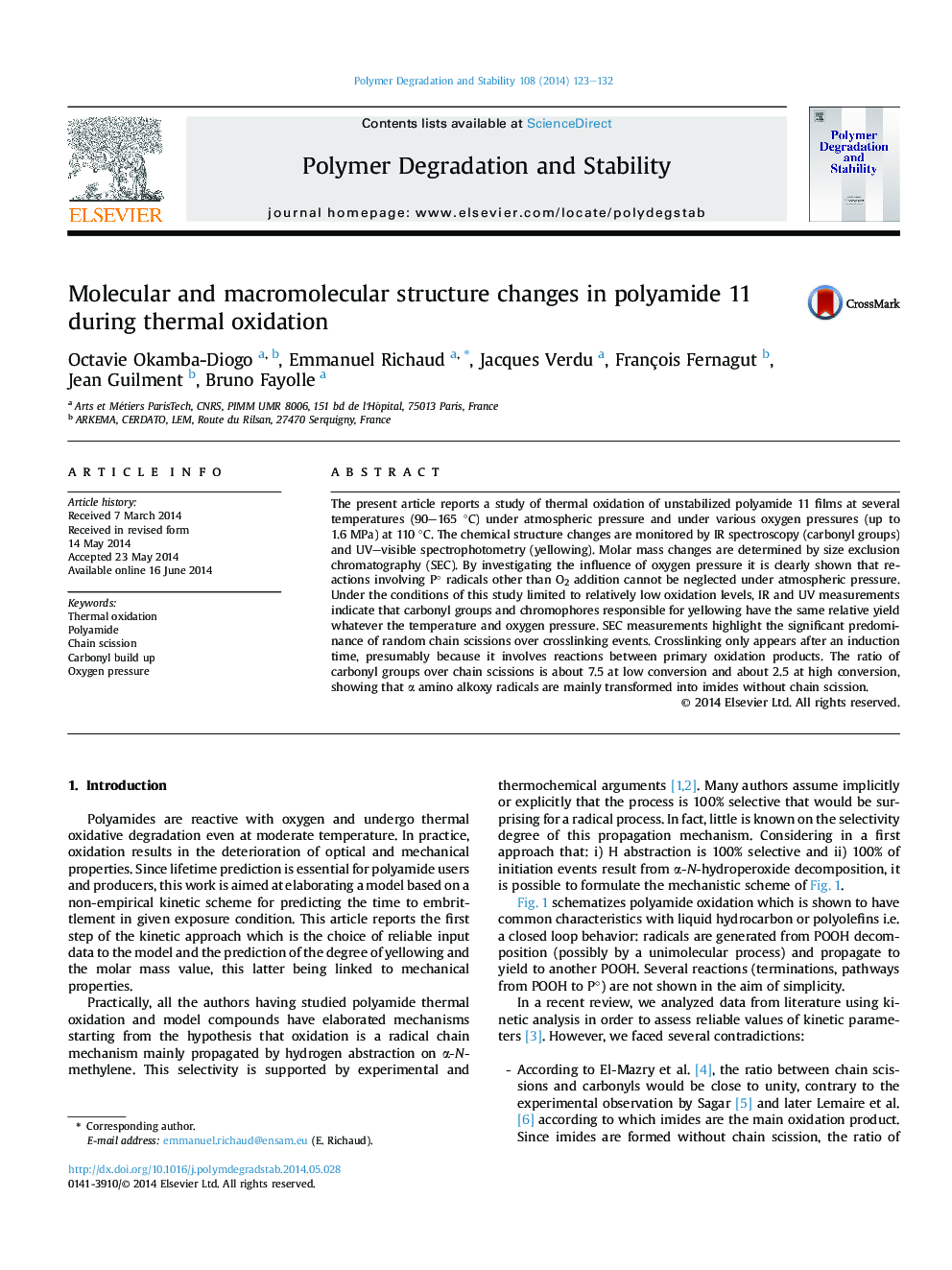| Article ID | Journal | Published Year | Pages | File Type |
|---|---|---|---|---|
| 5201789 | Polymer Degradation and Stability | 2014 | 10 Pages |
Abstract
The present article reports a study of thermal oxidation of unstabilized polyamide 11 films at several temperatures (90-165 °C) under atmospheric pressure and under various oxygen pressures (up to 1.6 MPa) at 110 °C. The chemical structure changes are monitored by IR spectroscopy (carbonyl groups) and UV-visible spectrophotometry (yellowing). Molar mass changes are determined by size exclusion chromatography (SEC). By investigating the influence of oxygen pressure it is clearly shown that reactions involving P° radicals other than O2 addition cannot be neglected under atmospheric pressure. Under the conditions of this study limited to relatively low oxidation levels, IR and UV measurements indicate that carbonyl groups and chromophores responsible for yellowing have the same relative yield whatever the temperature and oxygen pressure. SEC measurements highlight the significant predominance of random chain scissions over crosslinking events. Crosslinking only appears after an induction time, presumably because it involves reactions between primary oxidation products. The ratio of carbonyl groups over chain scissions is about 7.5 at low conversion and about 2.5 at high conversion, showing that α amino alkoxy radicals are mainly transformed into imides without chain scission.
Related Topics
Physical Sciences and Engineering
Chemistry
Organic Chemistry
Authors
Octavie Okamba-Diogo, Emmanuel Richaud, Jacques Verdu, François Fernagut, Jean Guilment, Bruno Fayolle,
